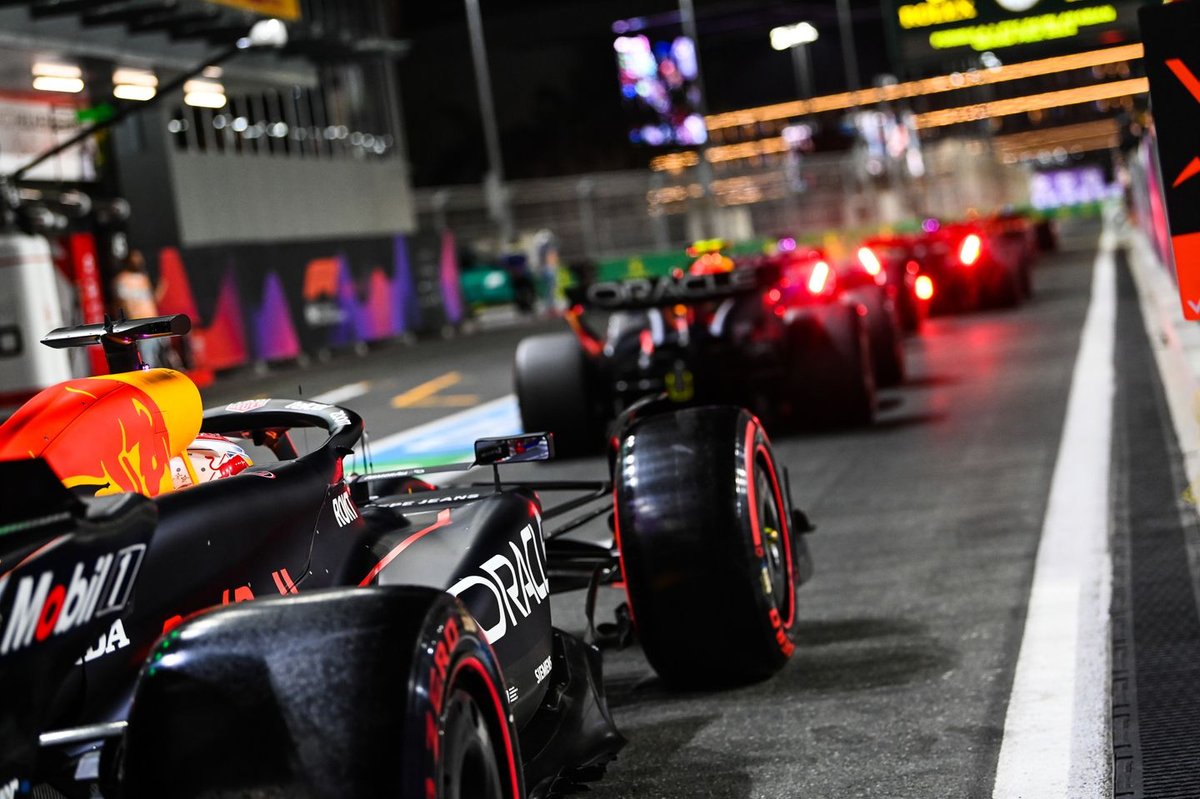As part of the effort to increase car performance to help accommodate the characteristics of the new turbo hybrid engines that feature a 50/50 power split between the internal combustion engine and battery, the new cars are going to have moveable aero.
The idea is that the car’s wings will be able to run in a high-downforce configuration in corners to help deliver grip, before shifting to a low drag configuration on the straights to help boost straightline speed.
One path being explored was for only the rear wing to be moveable, as it could then work easily in conjunction with DRS and would be the least complicated solution.
However, with some teams having recently been evaluating what is known as the baseline ‘Fangio’ car model in simulators to try to understand how this would work, some concerning characteristics emerged.
According to sources, when the rear wing was in its most low-drag configuration and the engine was at full power, the car was almost undriveable – with multiple examples of drivers spinning on straights under acceleration or being unable to take the smallest of curves without the rear stepping out.
This was triggered by a shift in aero balance that was estimated to be three times as much as is currently experienced when DRS is open.
One insider even suggested that the only way to prevent the cars spinning was to drive so conservatively that the lap times ended up being slower than current Formula 2 machinery.
It is understood that FIA representatives visited team facilities recently to get a better understanding of what is going on and what can be learned from the simulator findings.
And FIA sources have revealed that the conclusion has been reached that the moveable aero plan will not work with only the rear wing changing configuration.
Instead, the FIA has decided that the 2026 aero plan will need to incorporate both the front and rear wing moving in conjunction with each other if the cars are going to deliver the performance characteristics hoped for.
By ensuring that the two wings work together, it should help reduce the aero balance offset that has been causing trouble in the simulator.
As efforts continue to frame the aerodynamic regulations before the end of June, Red Bull team principal Christian Horner said he welcomed the FIA listening to team concerns about what they were finding out.
He famously warned last year that there was a risk of F1 being left with ‘Frankenstein cars’ because of the way that the chassis rules had to fit around the choice of power unit.
“I think there’s been some good progression,” Horner told Motorsport.com. “I think that the FIA have taken on board some of the feedback and some alterations have been made.
“We’re waiting for the chassis regulations, which will be a fundamental part of the 2026 package now and how that interacts with these power units.
“The various working groups are working hard on that and it’s important that we conclude something in the near future.”
Asked if the simulator findings from teams had been a cause for concern, Horner said: “The rules are the same for everybody at the end of the day.
“So, it’s how you apply them and translate them. I don’t think we’re afraid of whatever the rules will be, as it’s the same starting point for everybody.
“When they’re finalised, that’s when we’ll no doubt discover whatever issues there are with the rules, but that’s no different to any other regulation change.”
I feel like they want their mediocre engine regulations so hard they’re now scrambling how to make the cars not completely suck. Didn’t they already nerf the curve defining how much power the MGU-K is allowed to deploy at what speeds, just so there isn’t severe clipping towards the end of the straight? They also plan to allow burning fuel in corners to recharge the batteries just because recovery is actually worse compared to the current cars because dual axle recovery was axed and the MGU-H is missing.
I’d be surprised (or probably disappointed) if these regulations didn’t get heavily revised a few years later, just like 2014 to 2017.
My initial thoughts are simply that active aero seems like a thing the pinnacle of motorsport should have. I hope they can make it safe and not eat up cost caps.
The engines being so weak still feels bad though. With each team selfishly guarding their stake and turning a more straightforward profit can’t we afford to divorce F1 constructor development a bit from the real world? Like damn man they’re going to keep teams out, nerf the sport to make it cheap, make bigger and bigger profits, and everything needs to help their business outside F1? Can’t some stuff be about the racing and passion?
why do you automatically equate ICE with passion? why can’t we be passionate about electric drivetrains too?
I don’t. I prefer the sounds of the newer hybrids over v10s for example.
I meant that we shouldn’t have to have so many regulations conducive to tech trickling down to consumers now that that cycle is less of the profit margin. They’re making more and more simply from occupying a grid slot, some of that should come back to fans in the form of rules for racing’s sake.
but you don’t need massive, overcomplicated ICE’s for racing’s sake, that’s the point.
Because electric drivetrains are boring.
The soul of a car almost always comes from the engine. The experience of driving the car is massively impacted by the engine. All of that is gone in an electric drivetrain, replaced with basically a go button.
I’ll never have an interest in driving an electric car as a road car, let alone as a race car.
this is just metaphysical nonsense.
And that’s all that passion is. You asked why electric drivetrains don’t invoke the same kind of passion as ICE drivetrains, and I gave you an answer.
Electric cars can be objectively better, and I’ll still prefer to drive an ICE.
but we’re not talking about driving, we’re talking about watching f1.
The Jim Hall Chaparral was, I think, the first race car to use a movable rear wing. One iteration used air pressure from the front wing to activate the angle on the rear wing. The FIA didn’t like this, so outlawed it before it could be tried in F1, though they did allow a car with a big old fan on the back for a couple of races. How could that not be movable aero?
In any case, no matter how things change, they remain the same. Jim Hall never did get to build a F1 car.
Iirc the way they got around the rules with the fan car was by directing more than 50% of the fan’s airflow into cooling, therefore the fan’s predominate use was for cooling and any aero advantages it gave was just an ‘unintended’ consequence.
Still moveable aero. At the risk of going off subject, that car was originally designed to have surface mount radiators. When it was found that bad math had been used and this was impossible, Gordon Murray under a time crunch, put the fan on. But, he knew full well what it would do to ground effects.



